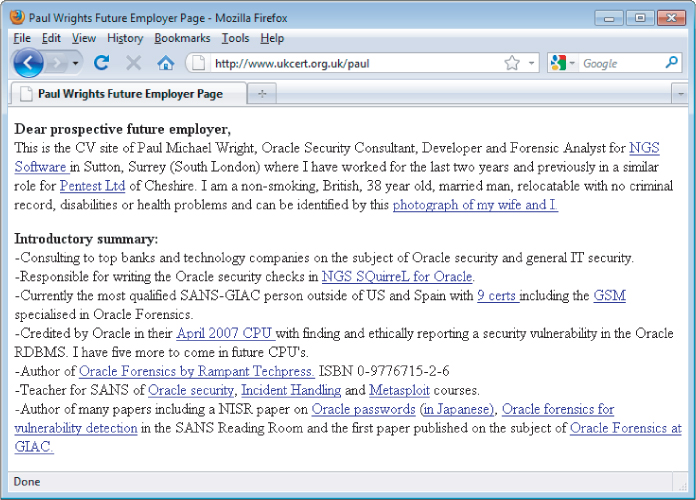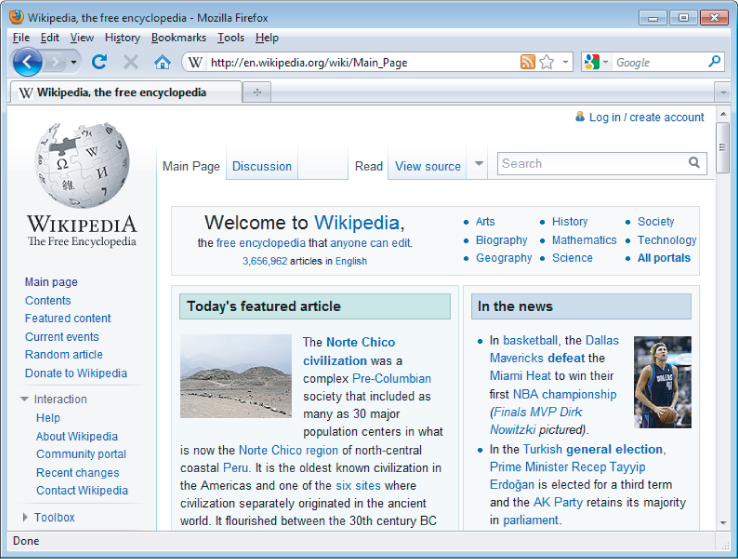Stuttard - Attack and Defend Computer Security Set
Here you can read online Stuttard - Attack and Defend Computer Security Set full text of the book (entire story) in english for free. Download pdf and epub, get meaning, cover and reviews about this ebook. year: 2014, publisher: Wiley, genre: Computer. Description of the work, (preface) as well as reviews are available. Best literature library LitArk.com created for fans of good reading and offers a wide selection of genres:
Romance novel
Science fiction
Adventure
Detective
Science
History
Home and family
Prose
Art
Politics
Computer
Non-fiction
Religion
Business
Children
Humor
Choose a favorite category and find really read worthwhile books. Enjoy immersion in the world of imagination, feel the emotions of the characters or learn something new for yourself, make an fascinating discovery.
Attack and Defend Computer Security Set: summary, description and annotation
We offer to read an annotation, description, summary or preface (depends on what the author of the book "Attack and Defend Computer Security Set" wrote himself). If you haven't found the necessary information about the book — write in the comments, we will try to find it.
Stuttard: author's other books
Who wrote Attack and Defend Computer Security Set? Find out the surname, the name of the author of the book and a list of all author's works by series.
Attack and Defend Computer Security Set — read online for free the complete book (whole text) full work
Below is the text of the book, divided by pages. System saving the place of the last page read, allows you to conveniently read the book "Attack and Defend Computer Security Set" online for free, without having to search again every time where you left off. Put a bookmark, and you can go to the page where you finished reading at any time.
Font size:
Interval:
Bookmark:

Contents

Chapter 1
Web Application (In)security
There is no doubt that web application security is a current and newsworthy subject. For all concerned, the stakes are high: for businesses that derive increasing revenue from Internet commerce, for users who trust web applications with sensitive information, and for criminals who can make big money by stealing payment details or compromising bank accounts. Reputation plays a critical role. Few people want to do business with an insecure website, so few organizations want to disclose details about their own security vulnerabilities or breaches. Hence, it is not a trivial task to obtain reliable information about the state of web application security today.
This chapter takes a brief look at how web applications have evolved and the many benefits they provide. We present some metrics about vulnerabilities in current web applications, drawn from the authors' direct experience, demonstrating that the majority of applications are far from secure. We describe the core security problem facing web applications that users can supply arbitrary input and the various factors that contribute to their weak security posture. Finally, we describe the latest trends in web application security and how these may be expected to develop in the near future.
The Evolution of Web Applications
In the early days of the Internet, the World Wide Web consisted only of web sites . These were essentially information repositories containing static documents. Web browsers were invented as a means of retrieving and displaying those documents, as shown in . The flow of interesting information was one-way, from server to browser. Most sites did not authenticate users, because there was no need to. Each user was treated in the same way and was presented with the same information. Any security threats arising from hosting a website were related largely to vulnerabilities in web server software (of which there were many). If an attacker compromised a web server, he usually would not gain access to any sensitive information, because the information held on the server was already open to public view. Rather, an attacker typically would modify the files on the server to deface the web site's contents or use the server's storage and bandwidth to distribute warez.
A traditional website containing static information

Today, the World Wide Web is almost unrecognizable from its earlier form. The majority of sites on the web are in fact applications (see ). They are highly functional and rely on two-way flow of information between the server and browser. They support registration and login, financial transactions, search, and the authoring of content by users. The content presented to users is generated dynamically on the fly and is often tailored to each specific user. Much of the information processed is private and highly sensitive. Security, therefore, is a big issue. No one wants to use a web application if he believes his information will be disclosed to unauthorized parties.
A typical web application

Web applications bring with them new and significant security threats. Each application is different and may contain unique vulnerabilities. Most applications are developed in-house many by developers who have only a partial understanding of the security problems that may arise in the code they are producing. To deliver their core functionality, web applications normally require connectivity to internal computer systems that contain highly sensitive data and that can perform powerful business functions. Fifteen years ago, if you wanted to make a funds transfer, you visited your bank, and the teller performed the transfer for you; today, you can visit a web application and perform the transfer yourself. An attacker who compromises a web application may be able to steal personal information, carry out financial fraud, and perform malicious actions against other users.
Common Web Application Functions
Web applications have been created to perform practically every useful function you could possibly implement online. Here are some web application functions that have risen to prominence in recent years:
- Shopping (Amazon)
- Social networking (Facebook)
- Banking (Citibank)
- Web search (Google)
- Auctions (eBay)
- Gambling (Betfair)
- Web logs (Blogger)
- Web mail (Gmail)
- Interactive information (Wikipedia)
Applications that are accessed using a computer browser increasingly overlap with mobile applications that are accessed using a smartphone or tablet. Most mobile applications employ either a browser or a customized client that uses HTTP-based APIs to communicate with the server. Application functions and data typically are shared between the various interfaces that the application exposes to different user platforms.
In addition to the public Internet, web applications have been widely adopted inside organizations to support key business functions. Many of these provide access to highly sensitive data and functionality:
- HR applications allowing users to access payroll information, give and receive performance feedback, and manage recruitment and disciplinary procedures.
- Administrative interfaces to key infrastructure such as web and mail servers, user workstations, and virtual machine administration.
- Collaboration software used for sharing documents, managing workflow and projects, and tracking issues. These types of functionality often involve critical security and governance issues, and organizations often rely completely on the controls built into their web applications.
- Business applications such as enterprise resource planning (ERP) software, which previously were accessed using a proprietary thick-client application, can now be accessed using a web browser.
- Software services such as e-mail, which originally required a separate e-mail client, can now be accessed via web interfaces such as Outlook Web Access.
- Traditional desktop office applications such as word processors and spreadsheets have been migrated to web applications through services such as Google Apps and Microsoft Office Live.
In all these examples, what are perceived as internal applications are increasingly being hosted externally as organizations move to outside service providers to cut costs. In these so-called cloud solutions, business-critical functionality and data are opened to a wider range of potential attackers, and organizations are increasingly reliant on the integrity of security defenses that are outside of their control.
The time is fast approaching when the only client software that most computer users will need is a web browser. A diverse range of functions will have been implemented using a shared set of protocols and technologies, and in so doing will have inherited a distinctive range of common security vulnerabilities.
Benefits of Web Applications
It is not difficult to see why web applications have enjoyed such a dramatic rise to prominence. Several technical factors have worked alongside the obvious commercial incentives to drive the revolution that has occurred in how we use the Internet:
Font size:
Interval:
Bookmark:
Similar books «Attack and Defend Computer Security Set»
Look at similar books to Attack and Defend Computer Security Set. We have selected literature similar in name and meaning in the hope of providing readers with more options to find new, interesting, not yet read works.
Discussion, reviews of the book Attack and Defend Computer Security Set and just readers' own opinions. Leave your comments, write what you think about the work, its meaning or the main characters. Specify what exactly you liked and what you didn't like, and why you think so.











